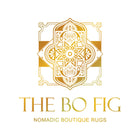The folk weaving style of Arak Magic Carpets
Central (Markazi) Province of Iran is home to some of the most beautiful and well-crafted Persian carpets in the world. The most famous carpets are woven in the villages around Arak, such as Sarouk, Mahal, Farahan, and Meshkabad. These carpets are known for their intricate and folk designs, vibrant colours, and high-quality mountain wool. They are made using traditional Iranian methods and are often made from sheep's wool. Markazi Province is also home to a thriving Armenian carpet weaving community. These carpets are known for their unique designs and use of high-quality threads. Markazi Province rugs, sometimes known as Arak rugs, are popular all over the world and are a symbol of Iranian culture. They are a must-have for any home that appreciates beauty and craftsmanship.
-
Sarouk rugs: Sarouk rugs are one of the most famous Persian rugs in the world. They are known for their bold and intricate patterns, vibrant colors, and high-quality wool. Sarouk rugs are typically made with a high knot density, which gives them a luxurious feel. The most common patterns in Sarouk carpets are Lachak Tranj, Afshan, Botah, Mahi Darham, Grape Vines, and Goldani. Sarouk carpets also have a variety of colours, and "Doghi Sarouki" is one of the colors that is used frequently in the weaving, MALEK from our exclusive collection is a fine Sarouk carpet.

-
Mahal rugs: Mahal rugs are known for their simple, yet elegant rugs. Mahal rugs are typically made with a lower knot density than Sarouk rugs, but they are still well-made and durable. The most common patterns in Mahal rugs are Lachak Toranj and Afshans. Mahal rugs are often decorated with floral motifs. TIHO, dated 1963, is from our exclusive collection from Mahal.

- Farahan rugs: Farahan rugs are known for their blue rugs, which are often decorated with floral motifs. Farahan rugs are made with a high-quality wool, which gives them a soft and durable texture. The most common patterns in Farahan rugs are medallions and Herati motifs.
-
Meshkabad rugs: Meshkabad rugs are known for their red and green rugs, which are often decorated with geometric patterns. Meshkabad rugs are made with a high-quality wool, which gives them a warm and inviting feel. The most common patterns in Meshkabad rugs are medallions and boteh motifs. TALIB in our semi-antique collection is from this region.

One of the characteristics of Arak rugs is that fake knots, double knots, or bad weaving are rarely seen in carpets from this region, which is why the quality of these carpets is high. Arak rugs have a coarse weave and a knot count of 30-40, and very rarely reaches 50. However, they also have fine-weaved rugs that are ordered by customers. The term "coarse-weaved rug" refers to a rug that has thick, long, and strong knots that have a springy property. These rugs have similar characteristics to the rugs of nomadic tribes and mountain and cold regions.
The Persian knot is used in these rugs and the loom is vertical. They have blue wefts, and if a plain field is chosen, the weft color is dark blue or black. Due to the proper use of wool in these carpets, they do not need expensive silk thread to become famous, and a rug that is woven with sheep's wool is hand-spun and dyed with high precision. This has made these carpets soft and shiny, and able to compete with silk carpets.
Dyeing is done in dyeing pots that contain particles of madder, walnut bark, and pomegranate peel. The dyed wool is then washed thoroughly with water to remove any excess dye and soften the wool. The professional dyeing and use of simple designs in Arak carpets has made these carpets popular without the need for silk. The most common dyes used in Arak carpets are madder (rarely red seeds), grape leaves, pomegranate peel, walnut shell, and a combination of these. The dyeing process is one of the factors that contributes to the fame of Arak carpets.
To sum up, Mahal and Meshkabad village rugs use the loose to moderate weave, and somewhat thicker pile, similar to nomadic and tribal rugs. Nevertheless, they have now taken an equal seat beside the highly reputed and more finely knotted Ferahan and Sarouk carpet styles from this same Markazi district. Exemplary Mahal antique carpets are preferred by many for their originality and inspired artistry, and have forged an important niche in today’s decorative market for their compatibility and versatility with the finest interiors and other works of art.



